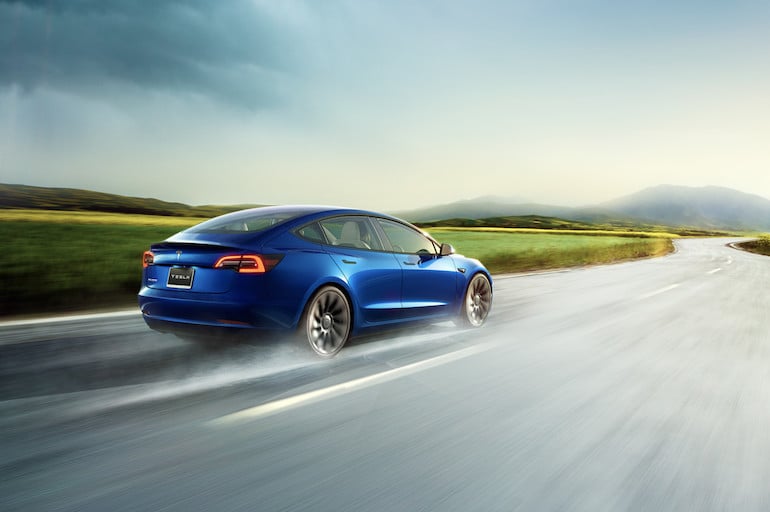Tesla’s $60,000 entry level electric vehicle, the Model 3, accounted for 60% of all new EV sales in 2021.
Figures released by the Electric Vehicle Council, which has exclusive access to the notoriously secret sales figures for Elon Musk’s EV brand, revel Tesla imported 12,094 Model 3 cars to Australia last year. Because Tesla sells directly to consumers on pre-order, the import figures are sales.
The Model 3, which at its higher end can cost more than $85,000, attracting the government’s luxury vehicle sales tax, is, in its most basic form, at the lower price range of EV cars available in Australia.
The Nissan Leaf, priced between $53,000 and $65,000, sold just 367 cars in 2021, coming equal 9th alongside the Mercedes-Benz EQA.
Chinese-owned British car brand MG, which only returned to the Australian market five years ago, has stolen the march on its bigger Japanese and Korean motoring rivals showing that car buyers are looking for value as they make the switch to electric.
The MG ZS EV, the cheapest electric car on the local market at $42,000, came in second for sales in 2021, behind Tesla, with 1388 sales representing 7% of total EV sales.
The good news for the sector, despite the high cost of EVs, is that sales of plug-in electric vehicles nearly tripled in the past year from 6,900 in 2020 to 20,665 in 2021. EVs now account for 1.95% market share of new vehicles, up from 0.78% in 2020.
Electric Vehicle Council CEO Behyad Jafari said the sales growth was being driven by positive policy change at a state level and it’s now up to the federal government to build on that momentum.
“The penny has now well and truly dropped on how good electric vehicles are. Most people in the car market will now be considering an electric option. The role of government is to help them make the jump,” he said.
“Governments that take the path of encouragement will capture myriad societal benefits – cleaner air, reduced respiratory illness, smaller carbon footprint, quieter roads. Those that lag will make themselves a dumping ground for old tech, dirty vehicles.”
Jafari said that while some state governments are supportive and encouraging the shift, we’re stuck in the past at a national level.
“We desperately need the federal government to introduce Australian EV rebates alongside fuel efficiency standards, just like other developed nations. If we get these changes, you’ll see sales figures really rocket ahead,” he said.
“As a wealthy, car-loving, early-adapting nation, Australia should be an electric vehicle leader. If we were we could restart a thriving manufacturing industry supporting thousands of quality jobs. But we need to build rapidly on this current momentum.
“After so many wasted years, Australia’s a long way back from the pack, but then again the cool thing about electric cars is how quickly they move from zero to a hundred.”
Here are the top 10 BEV & PHEV models for 2021.
1 Tesla Model 3 12,094
2 MG ZS 1388
3 Mitsubishi Outlander 592
4 MG HS 580
5 Porsche Taycan 531
6 Hyundai Kona 505
7 Volvo XC40 495
8 Hyundai Ioniq 407
9 Nissan Leaf 367
10 Mercedes-Benz EQA 367




















Trending
Daily startup news and insights, delivered to your inbox.